DCS: Black Shark 2 is a simulation of the Russian Ka-50 attack helicopter and the next entry in the Digital Combat Simulator combat series. DCS: Black Shark 2 is a greatly improved version of the original DCS: Black Shark that brings many new features.
The Ka-50 "Black Shark" is a unique and deadly single-seat, Russian attack helicopter that has seen combat in the Northern Caucasus. It combines a high performance dual rotor system with a deadly weapons payload of guided missiles, rockets, bombs, and a 30mm cannon. The Ka-50 is also unique in that it has an ejection seat.
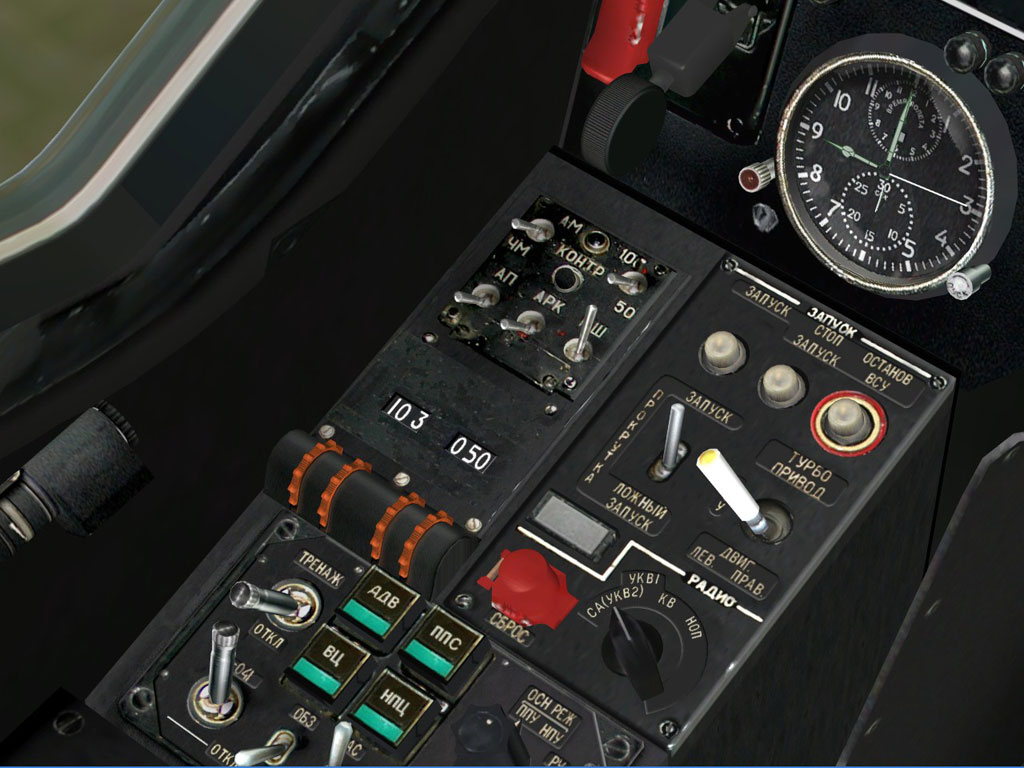
The R-800 UHF radio allows the pilot to communicate with the control tower and other aircraft. The R-800 is also used to send and receive encrypted data link information.
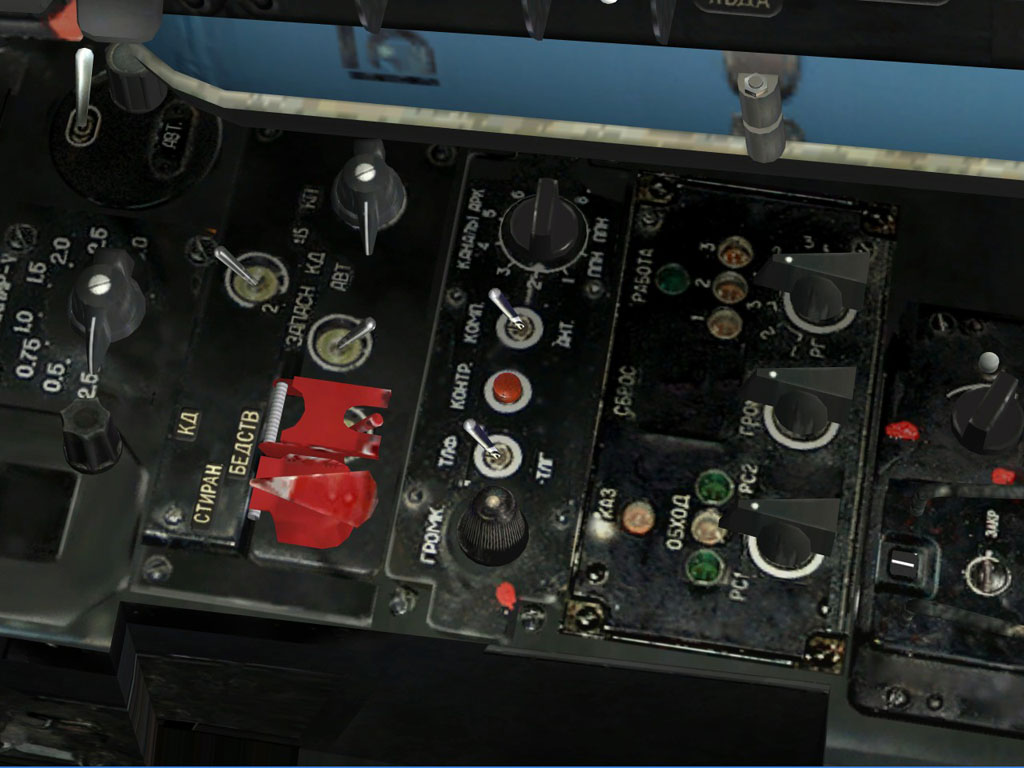
The ADF provides navigation using NDB (non directional beacon) or broadcasting radio stations. It can also monitor ground radio stations in the MW band.
The primary innovation regarding AI aircraft in «Black Shark» is the inclusion of a new and improved Flight Model (FM) system. In previous Eagle Dynamics products such as Lock On, the AI-aircraft FM did not reach a high-level of realism. For example: animations were sometimes used to supplement flight dynamics equations; this would in turn lead to unrealistic flight behavior in certain situations like high angles of attack and departures. This absence of detailed angle of attack modeling and the influence of cross wind led to problems when AI aircraft attempting to land in a cross-wind.
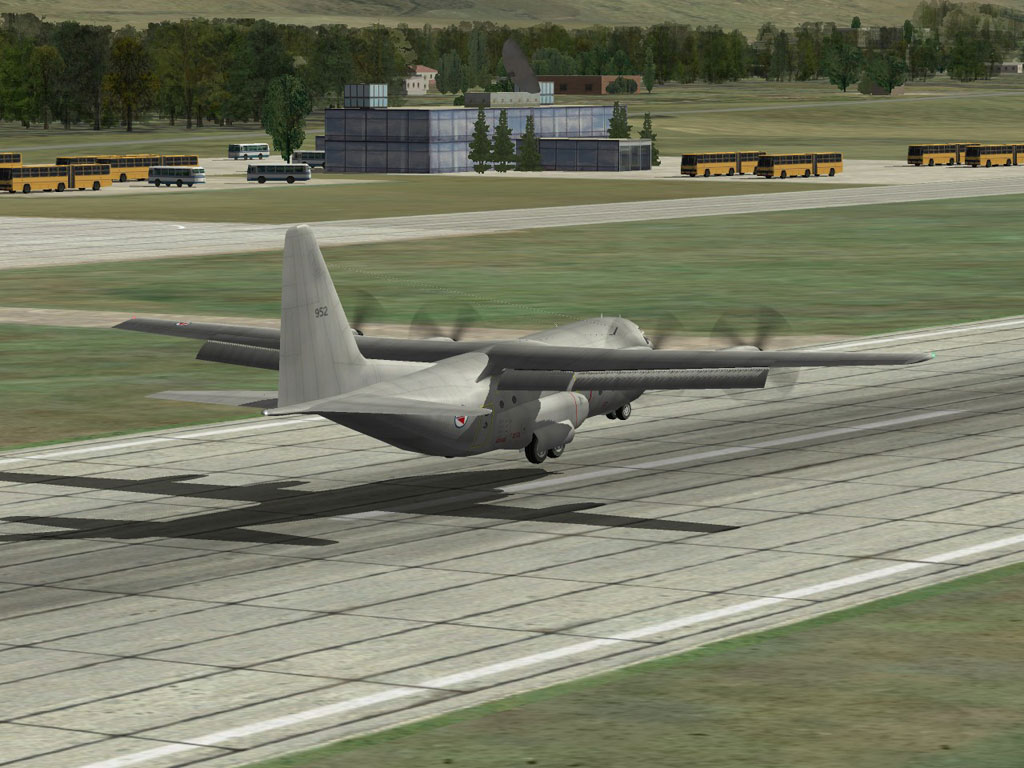
For «Black Shark», the same Standard Flight Model (SFM) will be used for AI-controlled aircraft that was used for player-controlled aircraft in «Lock On». This improved FM will provide much more realistic AI flight performance. Only the Advanced Flight Model (AFM) featured in the Su-25T of «Lock On: Flaming Cliffs» game (www.lockon.co.uk) is superior.
When using the SFM, the equations to derive aircraft motion take into account the unique inertial and aerodynamic characteristics of the aircraft. The engine model uses the factors of thrust and fuel-burn rate to further determine aircraft speed and altitude. These calculations allow the SFM to model realistic flight characteristics of aircraft (acceleration, rate of climb, maximum altitude, maximum and minimum speed, turn radius, instantaneous and sustained turn rates, range and flight duration). When converting the «Black Shark» AI aircraft to the SFM standard, it was necessary to modify more than 50 aircraft!
With this advancement in AI aircraft flight dynamics, it is now possible for the AI to conduct more advanced flight maneuvers and combat tactics:
These improvements also lead to more realistic combat between the player and AI aircraft.
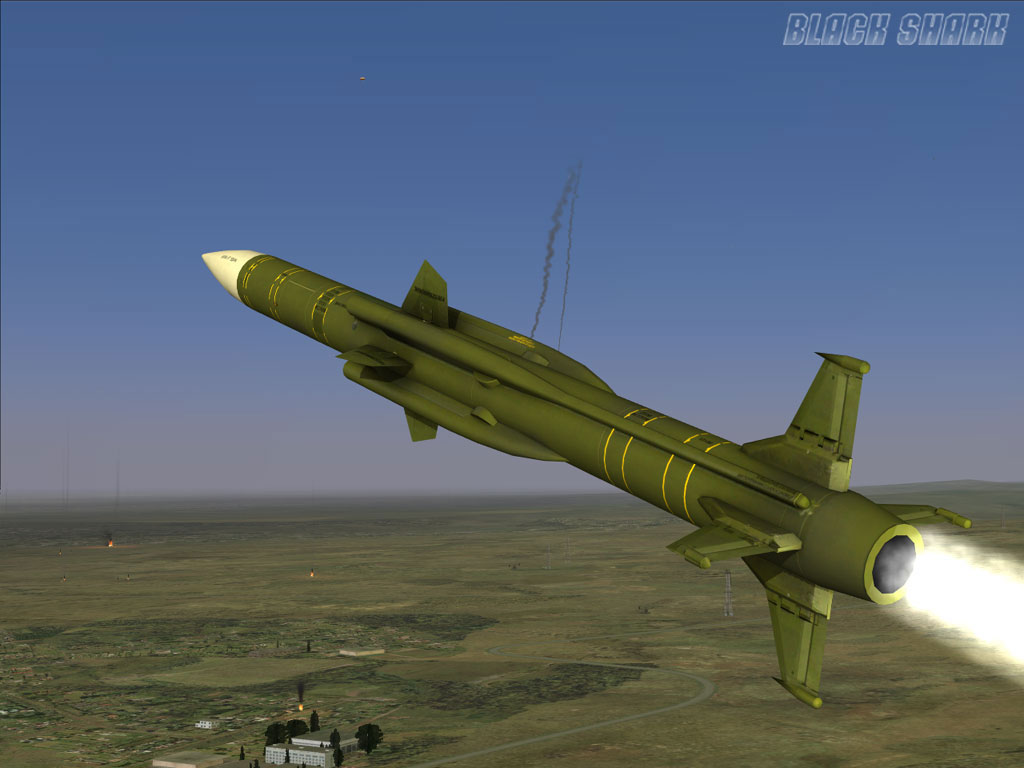
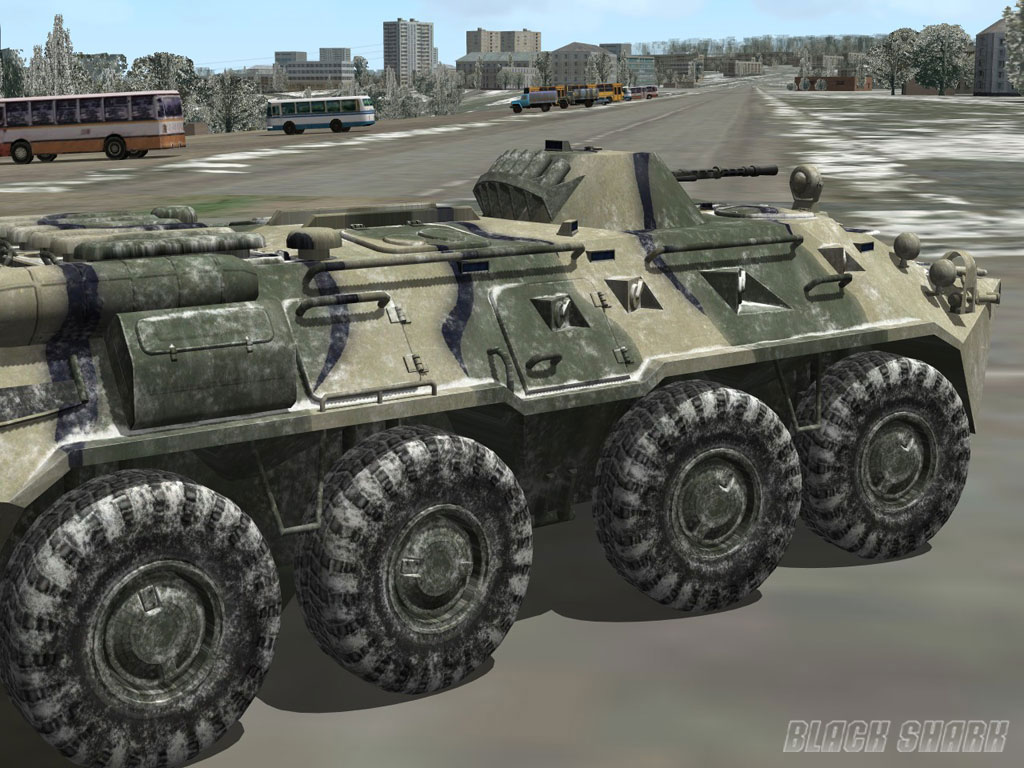
Ground vehicles, ships and weapons such as bombs, rockets, missiles and cannons have been significantly improved in «Black Shark». Improvements include:
The flight dynamic model of AI helicopters (hereinafter referred to as the «AI model») in «DCS : Black Shark» is a simplified version of the «advanced model», used for human-controlled helicopters. However, it is still based on the same equations of calculating realistic motion. The standard model provides realistic trajectories of motion and effects of control inputs during maneuvers.
The primary feature of AI model is an approximation of forces that are applied to the rigid body of a helicopter. With the AI model, aerodynamics forces on the chassis and forces from the rotors are calculated by using the same algorithms as in the advanced model with some simplifications to reduce unnecessary calculations. For example: the standard model rotor model calculates the inductive speed and the thrust in same manner as the advanced model but with a reduced number of calculated segments taken into account. The flap motion of blades and lift vector of the rotor are calculated using current flight parameters and control inputs.
The aerodynamic portion of the AI model includes a dynamic calculation of the fuselage as a source of aerodynamic drag and as an empennage that provides the flight stability. Every AI helicopter in the DCS series has its own unique set of empennages and fuselage air flow properties.
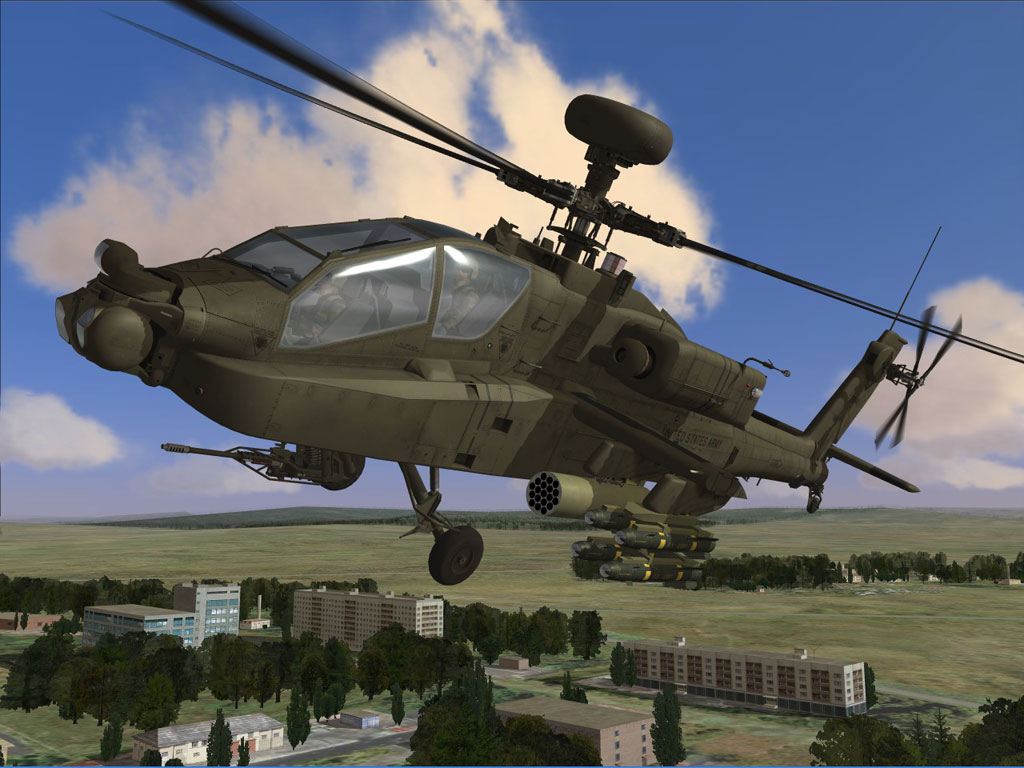
The AI model includes a power plant that is composed of engine(s) and a system that automatically maintains constant engine RPM. A fuel governor controls the engine power in relation to collective input and the difference between most efficient and current-setting rotor rpm. Maximum available power at any given air pressure, altitude and temperature is calculated by stored tables derived from the advanced engine model or from available manufacturers' data. The engine dynamic properties are modeled with engine power lag. The gas generator rotor RPM is set according to actual engine power.
As in the advanced model, the AI helicopters can use tricycle landing gear that is composed of wheels, a compression strut and a nonsymmetrical shock absorber.
The modeling of a unique fuselage and empennages that comprise an AI helicopter provide realistic flight properties when a helicopter is damaged. This is done by removing destroyed aircraft elements from the aerodynamic calculations. Tail rotor, stub-wings, parts of the main rotor (rotors), etc can be lost.
Even though controlled by the computer, the AI must still control the helicopter by inputs to the rudder pedals, cyclic and collective. The AI control algorithms take into account the flight limitations for each type of helicopter.








